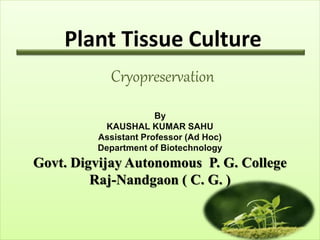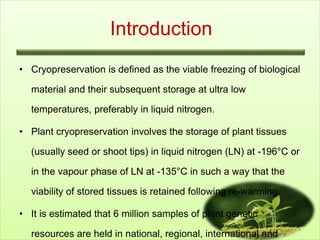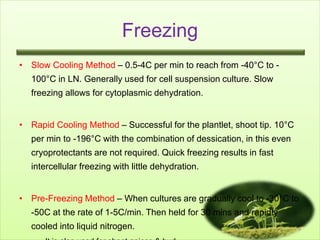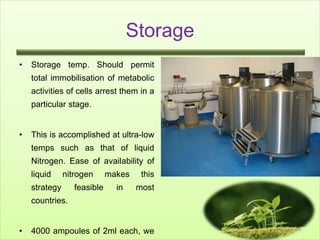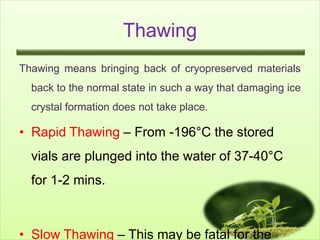Cryopreservation is the process of preserving living cells and tissues by cooling them to very low sub-zero temperatures (typically -196°C using liquid nitrogen). The key steps involve pre-treatment of plant materials with cryoprotectants and dehydration, slow or rapid freezing, storage in liquid nitrogen, thawing, and regeneration of plants. Cryopreservation allows for long-term storage of plant genetic resources and endangered species. While it has enabled conservation of many plant species, some recalcitrant plants remain difficult to cryopreserve. Recent developments include vitrification and encapsulation-dehydration techniques.
